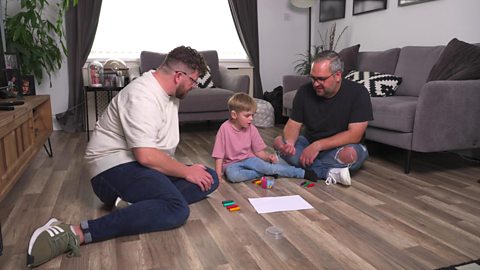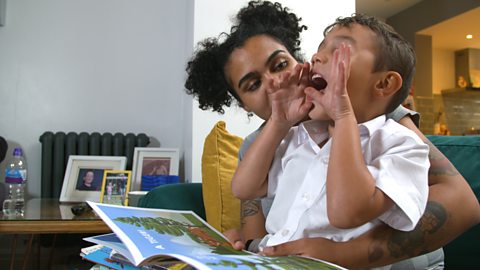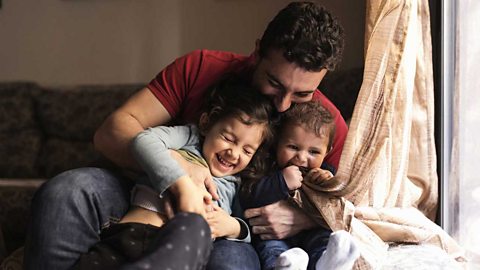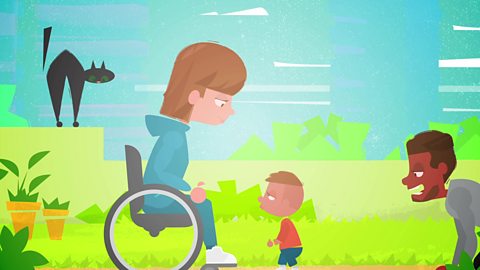Home > Activities > 4-5 years
Being able to recognise and express emotions is a key part of a child's development.
Children start to tune into faces from the day they are born. They start to recognise the extra cues we give when we are communicating such as making eye contact, facial expression and body language.
This helps us connect with others and is the foundation for early communication. Helping children tune into these 'non-verbal' cues allows children to learn how others are feeling and will start to give them the words and expressions to use to demonstrate their own feelings.
The face game creates an opportunity for you to talk openly with your child about how they feel and why. This game will help them to start recognising and understanding different emotions.
Watch the video below to find out how our families use this game to start a conversation all about feelings.
Can I see your biggest smile?
What makes you do big smiles like that?
Everything.Everything?
I'm going to do a facial expression and then you have to tell me what it is. Okay?
Okay. Sad!
What face am I pulling?
Smile! Yeah, I'mтІHappy! Yeah.
Can you remember a time when you were happy?
When I found baby monkey.
When you found baby monkey. Did you lose baby monkey?
Yeah.
What were you feeling whenever you lost him? Worried.Worried?
What's this face? Ugh!
The angry face!
The angry face. Can you go [ugh]? Ugh! What makes you feel sad?
I sting myself.
When you stung yourself? What on a nettle? YesterdayтІAwтІIf you're sad, how can mummy or daddy make you happy?
Hug!
Hug! Can I have a hug?
What would make me laugh?
If I do thisтІ
That does make me laugh!
When were you feeling happy?
I was feeling happy when Cassie was born, and when Aiden was born, nd when Ossie was born.
Were you happy when baby monkey was born?
And whenever baby monkey came to live with us I was happy!
What are the benefits of talking to your child about emotions?
- Talking about faces and expressions gives children the vocabulary to talk feelings.
- Playing this game will also encourage them to use a wide range of tenses and sentence structures.
- Reflecting on your own feelings can be a great way to help children label and understand different emotions.
- Having a conversation about how you are feeling, helps them consider the feelings of others.
- This game benefits listening and interaction skills as well as taking turns in a conversation.
- Playing a guessing game with faces helps children pick up on body language and facial expressions linked to certain feelings.

9 different ways to talk about emotions with children
1. Use different expressions and let them guess how you're feeling.
2. Ask them to pull a face that represents a certain emotion.
3. Let them ask you questions about your feelings.
4. Help them understand complex emotions by giving examples of a time you felt this way.
5. Talk to them about what makes them happy or sad.
6. Get creative and draw faces with different emotions.
7. Encourage your child to consider their feelings each day by simply asking, тHow are you feeling today?т
8. Discuss how characters in the stories you read together might be feeling.
9. Create a feelings tree together, with different emotions on the leaves.
Find out more about your child's emotional development
- Want to know how to help children understand their emotions?.
- Have you ever wondered why children have temper tantrums and what can you do to help them?
- Life is rarely straightforward, but here are some tips on how to help your child deal with uncertainty and change.
- More information on how to look out for your child's mental health.







